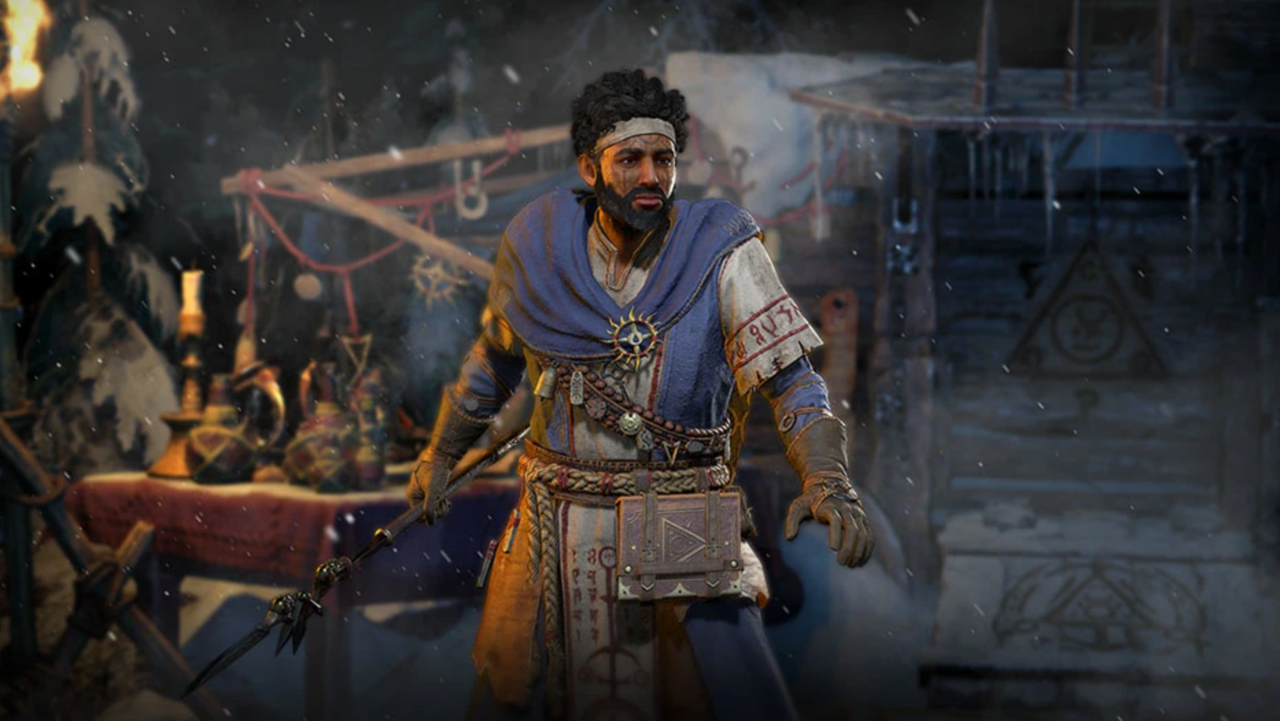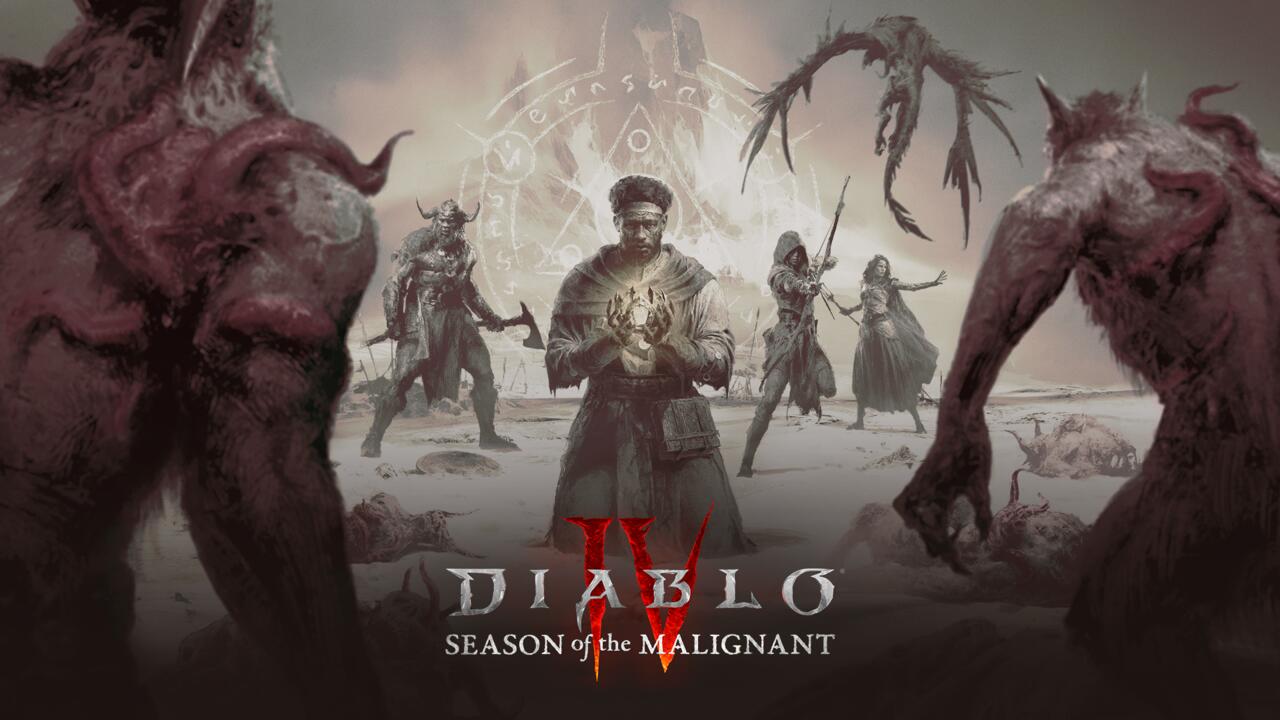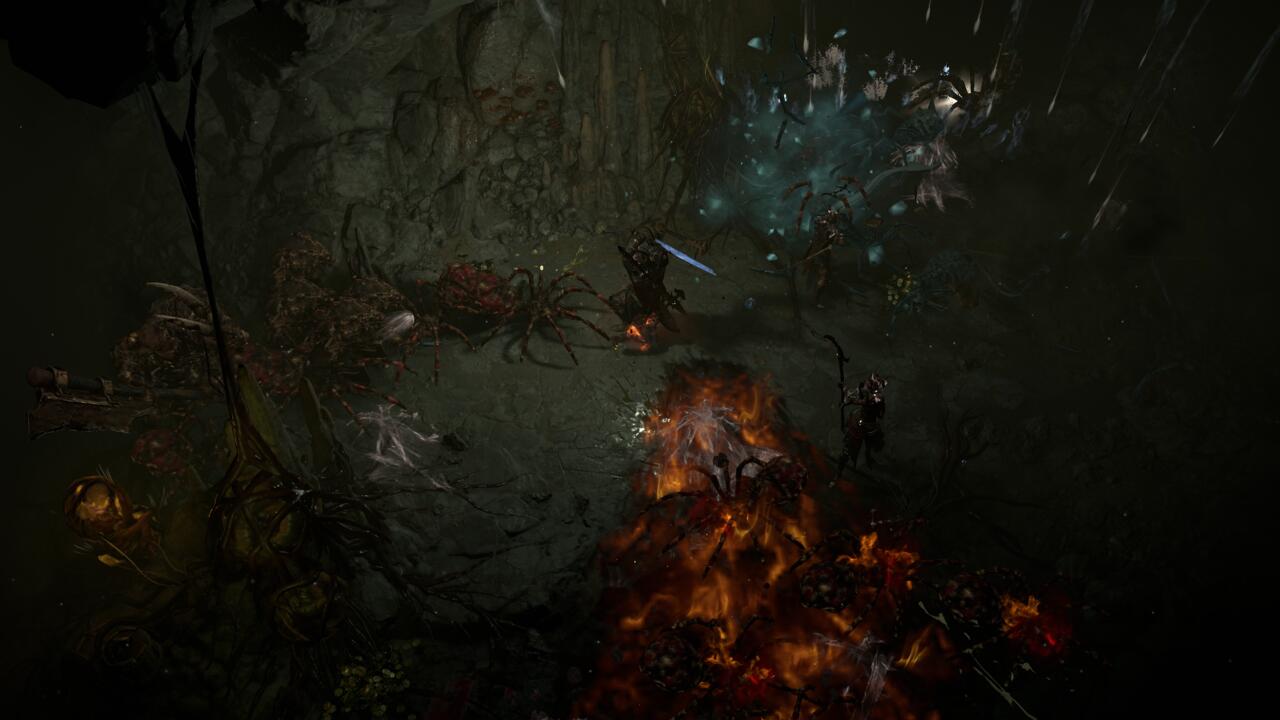The first of many seasonal content updates for Diablo 4 was officially revealed as the Season of the Malignant, launching July 20. With that comes a slew of gameplay changes like new enemies, dungeons, gear, and socket items called Caged Hearts that seem to be legitimate game-changers. While nearly every game under the sun seems to have a seasonal model or battle pass to throw your way, as an ongoing RPG, Diablo 4 lends itself well to this type of structure. That extends to the upcoming narrative-driven questline–new characters, enemies, storytelling opportunities, and lore to explore are also on the table when it comes to seasonal updates.
We spoke with senior writer Ben Chaney and quest designer Madeleine James about the Season of the Malignant from a story perspective and how this affords them room to try new things with Diablo 4 as it evolves. This new threat is pitched as a plague that has spread across Sanctuary in the aftermath of the base game’s main story, and at the heart of it is a newcomer named Cormond who calls on you to help battle the Malignant. But it appears to be more than just a mob-killing endeavor and perhaps another foray into Diablo 4’s more human side amid the demon-hunting.
At the center of the seasonal questline is this newcomer: an ally who’s a former priest from the Cathedral of Light. James mentions that Cormond is on the same level as a core character in the main campaign, with a fresh design and unique voice acting. Chaney describes him as a character who’s an ordinary person trying to overcome an extraordinary situation. He’s just a guy driven out of his small village who believes there’s a cure for the Malignant corruption that’s taken over, and we’ll be helping him find his way.
It’s an “ambiguous, scary situation” with Malignant monsters running around, but in terms of narrative themes, he posits, “Who knows if there actually is a cure; is Cormond right? Is his optimism well placed? Or is it hubris to even assume that you can affect change or is the situation much too big for you?” He also mentions corruption as another theme, and not just the kind that turns monsters Malignant. “You go on this discovery with Cormond, explore and fight, and these [Malignant], their hatred is manifesting in them. Can you remove that completely or do we all need a bit of that anger, that darker side in us, to survive?”

With regards to Diablo 4’s seasonal structure, James says, “What excites me the most about seasonal stories is that Sanctuary is such a huge world outside of the main conflict with Lilith.” She continues, “If you go through sidequest content, little of it actually directly ties into the main campaign just because there’s so much going on. You have all these different cultures with Druids, Barbarians, the Witches of Hawezar, and we want to expand on that even more.”
Chaney also brought up themes that are, and will be, consistent throughout Diablo 4’s lifecycle by mentioning, “In any of our quest content, it’s about Sanctuary being a difficult place to live. How do [the people] cope with this? In that tension and the insecurity of its people, which you’ve been feeling in the base game, we really want to bring more character-driven, human stories that first give players emotional access to the world of Diablo. Then bring in other bits of lore that continue story threads that might have already been established.”
Cormond is also said to be a bit of a reflection for Chaney, and he brought that to the character’s personality, especially in the way he deals with the Malignant threat. “I feel that in the world right now, there’s a lot going on, there’s all kinds of upheaval and scary things in the news everyday. [I think about] what do I do? What can I do? Am I even capable of it? Can I even matter in this world?” And what happens if I make the wrong choice and make a mistake?” Although those daunting questions were lighthearted contemplation, Chaney states, “All of that is in him.”

As far as the development process and breadth of a seasonal storyline, James mentions that she and other devs work in small “strike teams” with seasonal content, and says, “It’s definitely been a lot more fast-paced than I think any of us are used to.” For her and the narrative team working on seasons, she states, “It’s about taking the main gameplay loop that we want and then fitting a story around it to make it make sense. We don’t just want to put in a new mechanic, we also want to explain what that thing is and how it interacts with the people of Sanctuary.”
The development team has been figuring out what the right size is for a seasonal story, drawing the comparison that if expansions are like feature films, seasons are like episodes of a miniseries. “Getting creative with the existing open world of Sanctuary, playing within the possibility space we’ve established and trying to elaborate on it, seeing where there are gaps,” is what Chaney said in terms of their mentality with new content. He also brought up, “Areas where we didn’t hear much about this monster, or that family, or [a certain] region, ideas we originally planned to be a huge thing that just didn’t make it into the base game, but would like to pick it up again.”
As James says, their job is about contextualizing the new power-chase within a questline at an iterative pace. “Looking back at Diablo 3 seasons, we did so much so I hope players will be pleasantly surprised with how much new content they’re getting with new powers, uniques, and the new storyline. And we’re adding a new Uber Boss that will help make endgame content fresh.”

Chaney implied there’s still a big picture to consider, saying “I think we want to do everything, but then we have to look at what we can actually do, and leave those big story moments for the expansions. It’s about working lean, working fast, and just telling the tightest, most compelling stories possible with the tools we have.” And James concludes that they are generally “saving those big bucks for future expansions because they take a long time to make.”
For those interested in jumping into Diablo 4’s Season of the Malignant, note that you will have to finish the base game’s main story to access the new content and questline. From there, you’ll create a new character to build from the ground up within the seasonal content, but there will also be XP boosts in the free track of the battle pass, which should be handy when you transfer your seasonal character into the main game once the season ends. You can learn all about the mechanical changes in our interview with Diablo 4’s dungeon designer and director to get more insight on how the game is evolving from a gameplay standpoint when Diablo 4’s Season of the Malignant goes live on July 20.
The products discussed here were independently chosen by our editors.
GameSpot may get a share of the revenue if you buy anything featured on our site.

